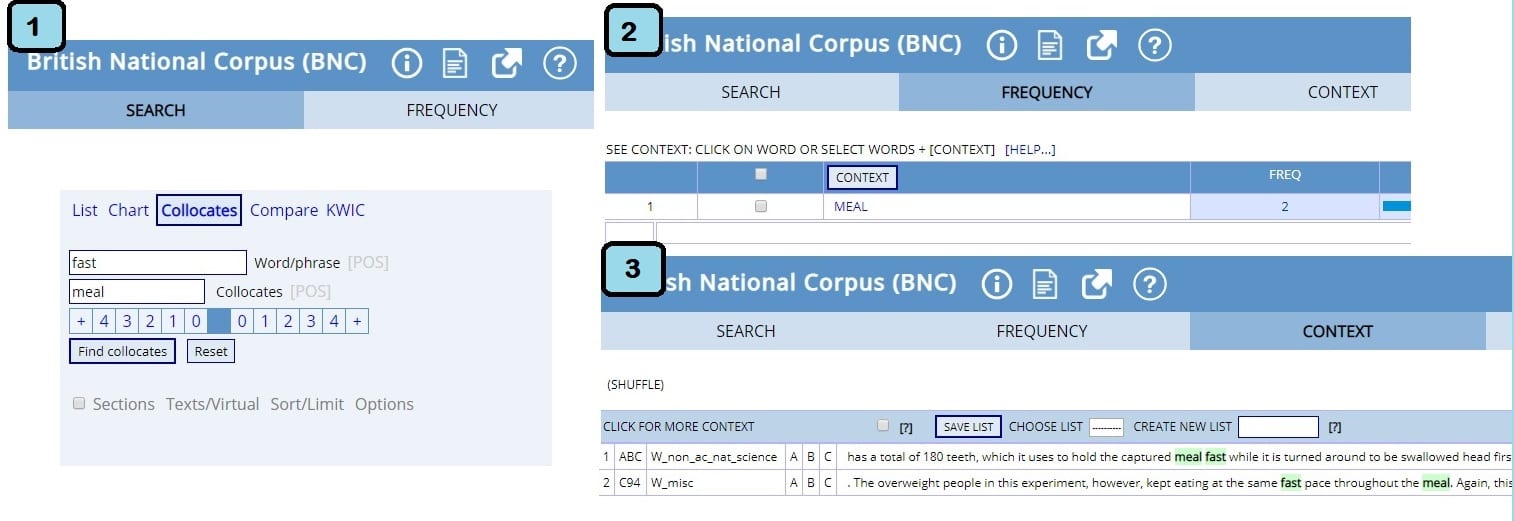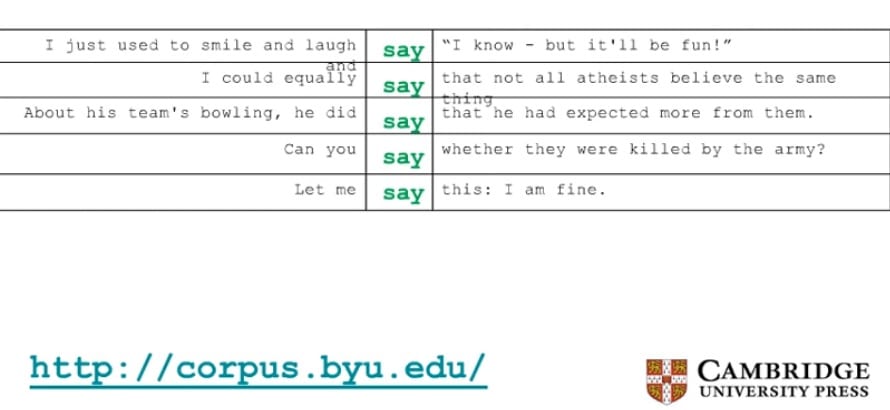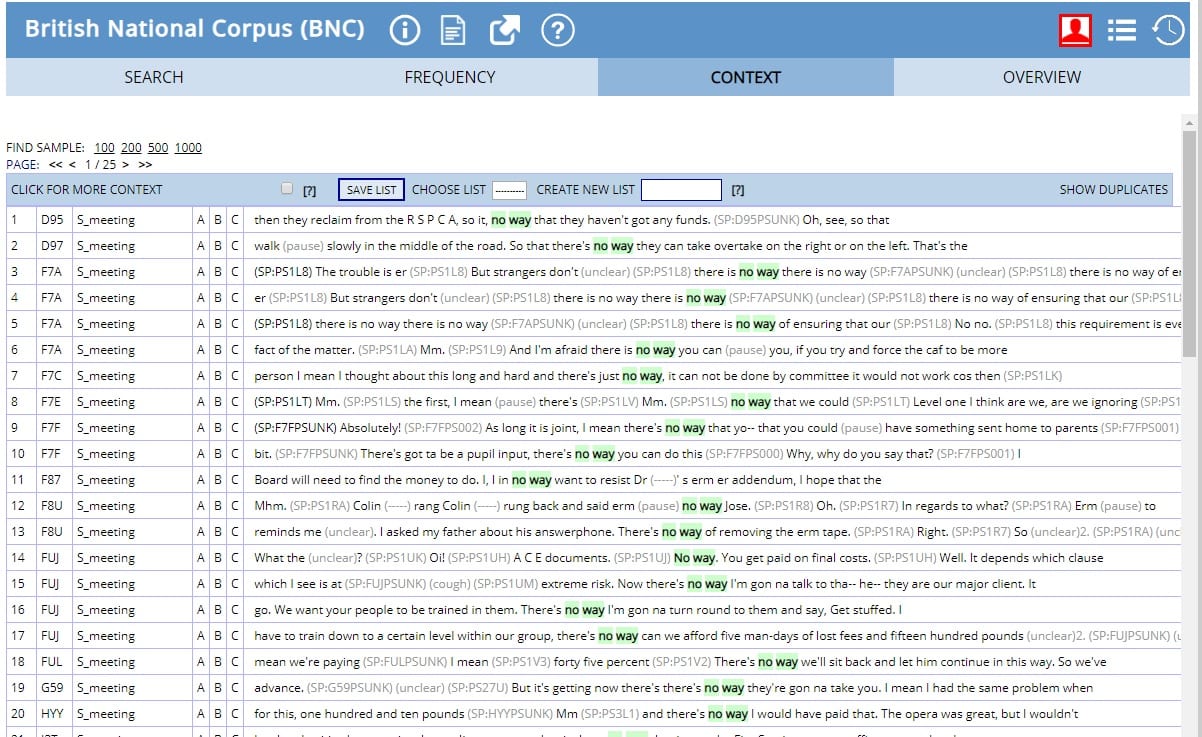Language corpora can be used by anyone who is engaged in language learning, teaching, or research; needs to assist writing or lexical knowledge as it’s a great searching, concordance tool to look for a vast number of authentic language contexts. Read more about corpora in this article.
In this article, we will talk about how to use corpora in lessons.
Nine ways to use corpora in the language classroom
1) To inform the syllabus
Teachers can use different corpora to find out more information about the language. If the dictionary does provide enough about the vocabulary you’re going to teach, check online corpora resources. Moreover, nowadays many course books are up-to-date, corpus-based coursebooks provide the language used in real life. However, some teachers have to use quite outdated coursebooks, therefore they have to check the information mentioned in the books if they wanted to make sure that the facts they were teaching about the language are in fact true, to teach common patterns before rare ones, and to use authentic examples of the patterns.
2) Check if the collocations students are using really exist
When I just start working with new students and ask to write an essay, most of them tend to write down phrases even without checking if they really exist, just because they sound right. Therefore, the first thing I highlight that they mustn’t use Google to check the collocation but teach them to use dictionaries and corpora to find out if they can that way or not. What we do is that we go to the British National Corpus and type in the words. For example, your student has written ‘fast meal’ on the analogy of ‘fast food’. After checking the collocation in the British National Corpus, we can see that it doesn’t exist.

Here is a tutorial for using online corpora at corpus.byu.edu.
3) Have students guess the top collocates of a word
It’s always very useful to learn not just words, but chunks. Do your students know the collocations of the words they are studying now? Ask students to write down 5 top words that collocate with the word, i.e. ? + tactics.
Then get students to check them against the corpus. Any answer that appears in the top 20 is counted.
4) Find the missing word
A corpus can also show all the examples of a word in context. This is called a concordance.
Teachers can use the authentic contexts searched from corpora to compose a gap-filling sheet for students to work on. Here is a useful way to create an exercise for the task “Use of English” — create a search for any word you want to teach, choose sentences, then delete that word and have students guess the missing word.

or
You can show the collocates and have students guess the word. Show the collocates of a word one by one. Students have to guess what the word might be. The fewer the collocates needed to get the correct answer, the more points the group gets. For example,
human + ?
legal + ?
civil + ?
voting + ?
What word could go into all 4 gaps? That’s ‘rights’. Students can get extra points if they name other words that collocate with the given word’.
5) Finding out how words are used in a language
Apart from memorizing the words and their definitions, use a more active learning process — make students deduce the meaning themselves. By running their eye over the concordance, students can find all the meanings of the word, and phrases it is in. Ask students to search for the word, read the sentences and figure out the meaning of it.
Kennedy and Miceli design activities that engage learners in a four-step approach to corpus investigation: (1) formulate the question, (2) devise a search strategy, (3) observe the examples and select relevant ones, and (4) draw conclusions.
The learner interacts critically with both corpus and dictionary data, identifies patterns in authentic materials.
Moreover, this activity develops noticing skills, as it involves learners in exploring and noticing the target language, teachers can engage learners in a ‘content decision making’ learning situation. This technique is called Data-Driven Language Learning.
6) Have students guess the top suffixes of a word
In the BYU-BNC corpus, one can search for suffixes by using the asterix.
By typing *read, you can get the prefixes of the word listed in order of frequency, e.g. ‘misread’, ‘re-read’, ‘proofread’, etc.
By typing read*, you get the suffixes of the word ‘read’, including its morphological inflections, e.g. ‘reading’, ‘reader’, readings’, etc.
7) To check the register and the content the word is used
Besides that the corpus shows the context of the word and phrases, you can also see the source and that gives extra information about the register. Once my students used the phrase ‘no way’ in her essay during the preparation for Russian State Exam (she wasn’t sure about the register), so I asked her to carry out an investigation using BNC corpus and she found out that it’s an informal, colloqual phrase (of course, the dictionary shows the same, but a little bit of research helped to develop exploring and noticing skills).

8) Create your own corpus
If a class is currently engaged with a specific topic, it would be nice for them to look at the English of that topic. So you can create any corpus you want. The Sketch Engine has an instant corpus tool, where text on a topic is gathered from the web in a few minutes and this is then the data for a mini research project.
Have great lessons!






 Маргарита Аветисян
Маргарита Аветисян 
 Вероника Аветисян
Вероника Аветисян 


